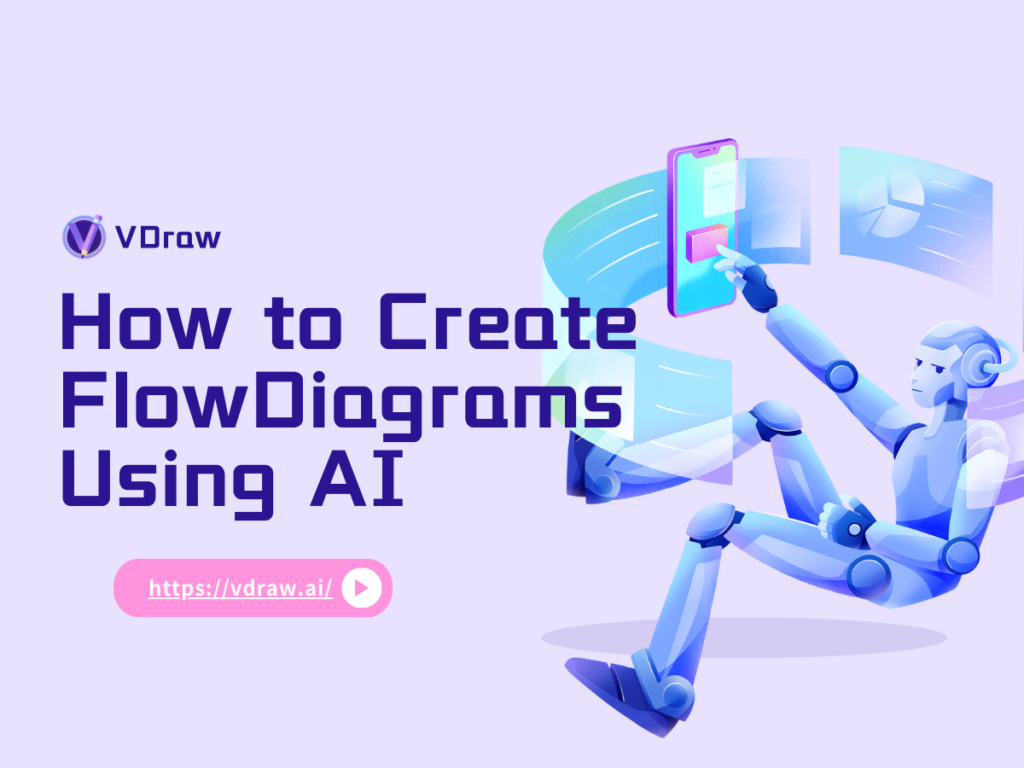
In the fast-paced world of business and technology, flow diagrams have become an essential tool for visualizing processes, making complex information digestible, and facilitating communication among team members. But how do you create flow diagrams using AI? Fear not! This guide is here to walk you through the process, sprinkle in some humor, and highlight the magic of AI-powered tools like the AI Flowchart Generator.
Why Use AI to Create Flow Diagrams?
1. Speed Up Your Projects
First and foremost, one of the primary reasons to learn how to create flow diagrams using AI is speed. Traditional methods of diagram creation can be time-consuming and tedious. With AI, you can generate flow diagrams in a matter of seconds. Imagine typing out a few lines describing your process, and voilà! Your diagram is ready, leaving you with more time to focus on what really matters—like figuring out how to avoid those endless meetings.
2. Enhance Team Collaboration
When it comes to teamwork, collaboration is key. Knowing how to create flow diagrams using AI allows team members to contribute ideas seamlessly. Everyone can access the same platform, and with the AI Flowchart Generator, you can create and edit diagrams in real time. This means fewer misunderstandings and more productive brainstorming sessions—no more “Can you repeat that?” moments!
3. Generate Multiple Versions Instantly
Ever found yourself stuck between two versions of a flow diagram, unsure which one to choose? With AI, you can easily generate multiple versions of your flow diagrams. This feature is particularly useful when you’re exploring different strategies or trying to present various solutions to a problem. So, learning how to create flow diagrams using AI not only saves time but also gives you the flexibility to experiment with new ideas.
4. Quick Summarization of Key Points
AI isn't just about creating diagrams; it's also about summarization. When you know how to create flow diagrams using AI, you can quickly summarize the key points of your process. This can be especially helpful during presentations or meetings, where clarity is crucial. Your audience will appreciate the concise visuals that help them grasp complex concepts without feeling overwhelmed.
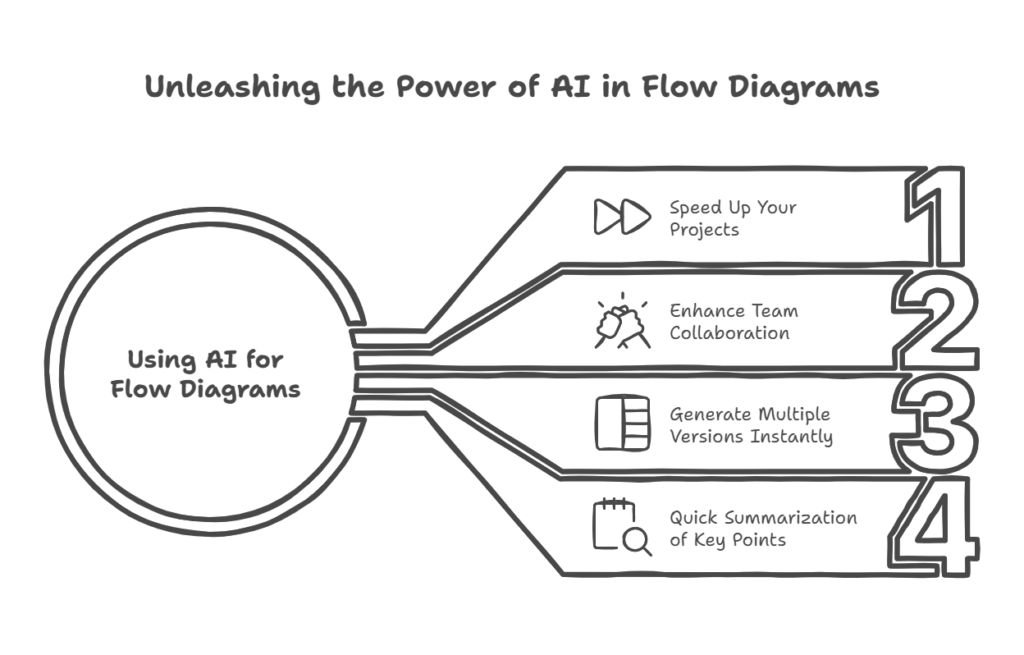
The Role of AI Technologies in Flow Diagram Creation
Natural Language Processing (NLP)
At the heart of how to create flow diagrams using AI is Natural Language Processing (NLP). This technology enables AI to understand and interpret user input in natural language. Instead of struggling with complex software, you simply describe your process in plain English, and the AI does the heavy lifting, transforming your words into a visual masterpiece.
Machine Learning (ML)
Machine Learning (ML) enhances the AI’s ability to learn from user preferences and historical data. As you continue to use the AI Flowchart Generator, it becomes smarter, offering suggestions that align with your style. So, the more you use it, the better it gets at understanding how you like your diagrams—talk about a win-win!
Smart Suggestions
AI doesn’t just stop at generating flow diagrams; it also provides intelligent suggestions. When you know how to create flowchart with ai, you can benefit from recommendations that highlight potential bottlenecks or areas for improvement. This feature is like having a personal assistant who nudges you in the right direction while you’re busy being a rockstar.
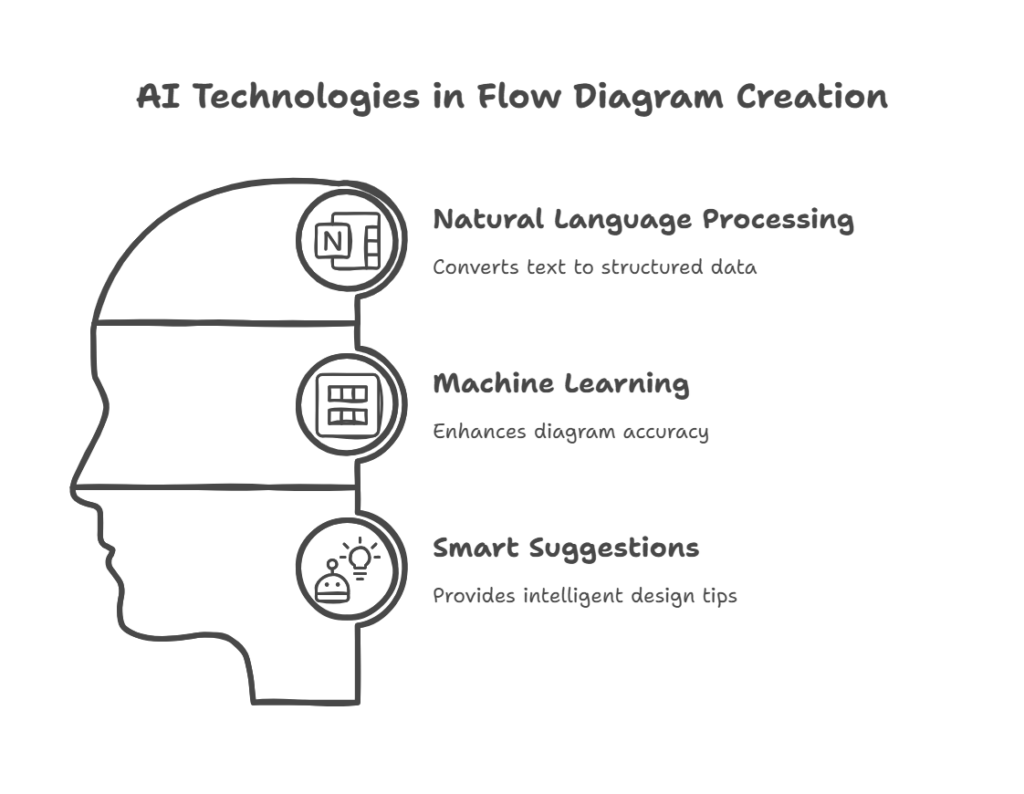
Who Can Benefit from AI-Generated Flow Diagrams?
Software Developers
For software developers, flow diagrams are invaluable for visualizing complex algorithms and workflows. Knowing how to create flow diagrams using AI can streamline the planning and debugging process, making it easier to communicate ideas with your team.
Business Analysts
Business analysts thrive on clarity, and flow diagrams offer just that. By learning how to create flow diagrams using AI, they can effectively visualize business processes, enhancing communication and decision-making across the organization.
Educators and Students
In the educational sphere, flow diagrams can elucidate programming logic and problem-solving methods. Whether you’re a teacher explaining a concept or a student trying to grasp a new topic, knowing how to create flow diagrams using AI can significantly enhance understanding.
Researchers
Researchers often need to visualize data flows and experimental processes. By mastering how to create flow diagrams using AI, they can present their findings in a clear and engaging manner, making their work more accessible to a broader audience.
Entrepreneurs
For business owners, flow diagrams are crucial for optimizing operations and strategizing initiatives. Understanding how to create flow diagrams using AI can help entrepreneurs articulate their visions and streamline their processes.

Customer Service Representatives
Customer service relies heavily on effective communication. By creating flow diagrams that outline customer interaction processes, representatives can improve efficiency and enhance customer satisfaction. Knowing how to create flow diagrams using AI can be the secret sauce to a smooth customer experience.
Advantages of AI-Generated Flow Diagrams
Visual Communication
One of the standout benefits of using AI to create flow diagrams is improved visual communication. Diagrams can help team members grasp complex concepts quickly, reducing the chances of miscommunication. After all, a picture is worth a thousand words!
Real-Time Collaboration
The best AI tools often support real-time editing and commenting, making collaboration a breeze. With the AI Flowchart Generator, team members can work together on the same diagram, ensuring everyone is on the same page—literally.
Integration and Compatibility
Many AI flowchart tools integrate seamlessly with other software, such as project management tools and document editors. This compatibility ensures that you can easily import and export files, making sharing and collaboration even more straightforward.
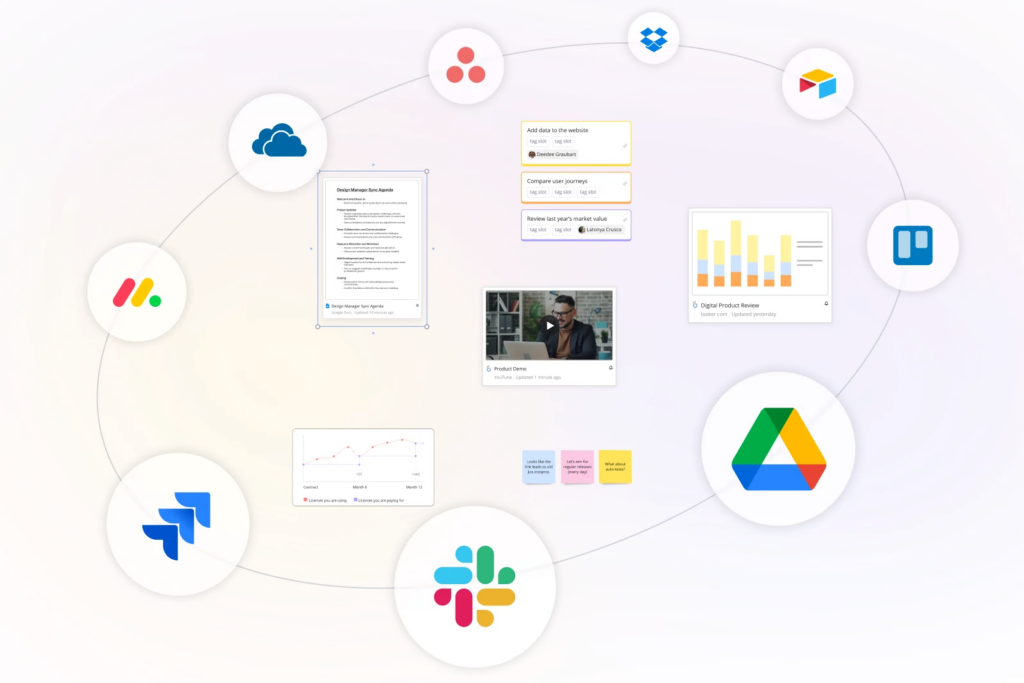
AI Flowchart Tools and the Power of VDraw's AI Flowchart Generator
Common AI flowchart tools include Lucidchart, Miro, Microsoft Visio, and Creately, each with its own unique features. Notably, VDraw's AI Flowchart Generator stands out as a powerful diagramming tool.
With VDraw, you can “Draw Your Ideas Through AI-Powered Visuals” without needing any design skills. Just share your ideas, and let the visuals do the talking!
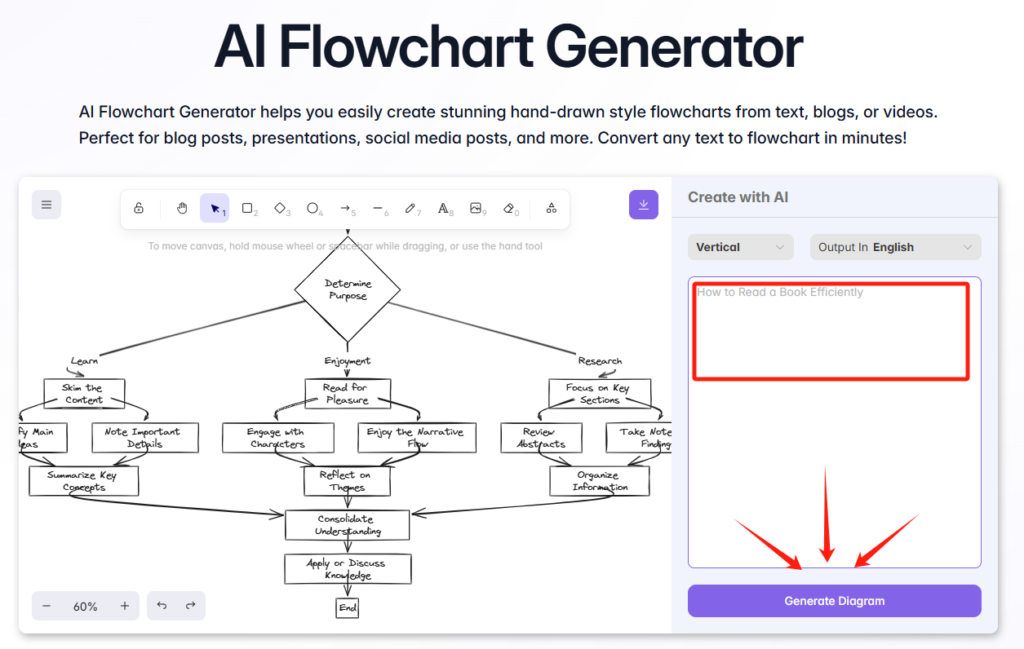
How It Works
The AI Flowchart Generator takes your text descriptions and transforms them into visually appealing flow diagrams. Its intelligent design ensures that you can easily modify and adjust your diagrams, making it user-friendly and adaptable to your needs. Plus, the human touch is never lost—you're always able to make secondary modifications to ensure the final product meets your expectations.
User-Friendly Design
VDraw’s interface is intuitive, making it easy for anyone to start creating flow diagrams. Whether you're a tech-savvy developer or a novice, you’ll find that learning how to create flow diagrams using AI has never been more accessible.
Future Outlook
As AI continues to evolve, the possibilities for flow diagram creation are limitless. We can expect even more advanced features, such as enhanced customization options and deeper integration with other tools. The future of how to create flow diagrams using AI is bright, and those who embrace these technologies will undoubtedly reap the benefits.
Conclusion
In conclusion, knowing how to create flow diagrams using AI is not just a valuable skill; it’s a game-changer. With tools like the AI Flowchart Generator, you can streamline your workflow, enhance collaboration, and communicate ideas effectively. So, why wait? Dive into the world of AI-powered flow diagram creation and watch your ideas come to life!
With all the time you save, you might even find yourself with a little extra time to enjoy that coffee break you’ve been dreaming about. Cheers to creating flow diagrams with ease!
